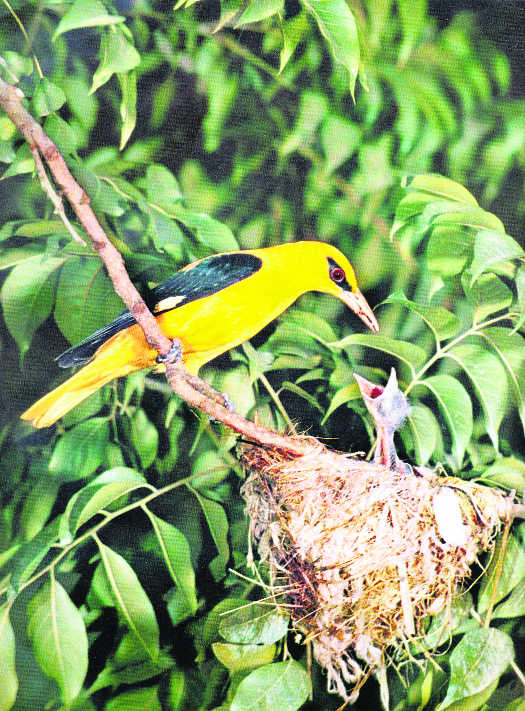As I read the brief review of the latest reprint of Malcolm MacDonald’s book Birds in My Indian Garden in The Tribune Spectrum last Sunday, my memory flashed back to a most pleasant encounter in May, 1962 with an affable diplomat who was an avid bird watcher.
Although the subcontinent had evolved with a rich bounty of avian species (almost 1,300), yet our bird enthusiasts had remained starved of illustrated guides for ease of pinning the identity of the bird spotted, till Sir Malcolm MacDonald’s arrival as the British High Commissioner in 1955.
Of course, we had had since long the Popular Handbook of Indian Birds by Hugh Whistler (1928), followed by Salim Ali’s The Book of Indian Birds (1941), but they were essentially textual narratives. Sir Malcolm was the first to break fresh ground by providing a full- page photograph of each resident bird; and it was an instant favourite.
My meeting with Sir Malcolm, the son of British prime minister Ramsay MacDonald, was simply a lucky chance. I had returned after leading a successful mission to forestall Chinese incursion in the Barahoti plain (the disputed alignment in the Central sector) and it was decided during the debriefing that I should attend the reception at Prime Minister Nehru’s residence that evening (for felicitating the Indian team which had attempted to summit Everest, albeit unsuccessfully). The Defence Secretary was to introduce me to the PM and also discreetly whisper about the success of “Showing the Flag” mission to Barahoti.
Taken by surprise, I was full of trepidation but not for long; the warm handshake and genial smile of Mr Nehru and the effervescing presence of Indira Gandhi by his side at once revived my self-confidence. I noticed Lt Gen Sir Harold Williams, the erstwhile Engineer-in-Chief of the Indian Army, in an animated conversation with a gentleman whom he addressed as Malcolm. Their talk centred on the bird life in and around Delhi. Gen Williams was a man of many parts; the distinguished soldier was an accomplished yachtsman (Founder President of Okhla Sailing Club, Delhi), a keen mountaineer (leader of the successful Indian ascent of Kamet, scaled by Maj Nandu Jayal of the Sappers) and a dyed-in-the-wool ornithologist who had joined hands with Salim Ali to call on Nehru and have the marshes of Bharatpur notified as the Keoladeo Ghana Water-birds Sanctuary.
The General was crowded by the Everest team when I summoned courage to walk up to Sir Malcolm and tell him how much I had enjoyed the account of his teaming up with Van Loke Tho for photographing the White-Bellied Sea Eagles, from atop a 120-foot-high tower especially erected inside the compound of his, the High Commissioner’s, residence at Singapore.
He proceeded to recount how fearfully that tower had swayed with the breeze and his wife had warned Van that “if anything happens to my husband, I shall have to blame you!” Van was perhaps the richest man of South-East Asia as he was the sole owner of his family’s monopoly over all rubber plantations and tin mines in Malaya, but his passion and chief relaxation lay in bird photography — almost always in the company of his wife Christina, an acclaimed avian photographer. They possessed cameras, custom-built by the world’s best manufacturers, Hasselblad of Germany. Van’s scouts scanned the outskirts of Singapore daily to report bird sightings and the couple spared neither money nor effort to handle their cameras. However, in the instant case, it was Van and Sir Malcolm who had persisted over 10 days to obtain five images which became “viral” hits, the world over.
Sir Malcolm enquired whether I had come across his book Birds in My Indian Garden and he chuckled when I mentioned that I admired the manner it opens with a gallant expression: “This book is made beautiful by the illustrations by Christina Loke. They adorn my poor prose with lovely touches of poetry... I believe this volume will establish her securely in the front rank of those who practice the extremely difficult but brilliantly rewarding art of photographing wild birds.”
The “poor prose” was typical of the British under-statement; the Golden Oriole’s plumage, for instance, found mention as: “No Emperor was ever more regally robed.”
Christina’s temperament was as fiery as her figure was beautiful and the marriage with Van Loke had ended in a bitter divorce. Of course, that did not diminish his love for ornithology, as shortly after he had sent a hefty cheque to his dear friend Salim Ali to buy a station wagon to help with his field surveys, accompanied with a note: “Do let me know if this will suffice because there is more credit, where this came from.” I think this is what philanthropy was truly meant to be.
The affable diplomat then mentioned how gracious Mr Nehru had been to permit Christina unlimited access to photograph a White-eye nesting, “where the little bird sat hatching two eggs while the Prime Minister sat in his study a hundred yards away conducting the highest affairs of state”. Regrettably, the reprint of the book is without any other visual.
Meanwhile, as the reception ended, imagine my joy when Sir Malcolm invited me to his residence to look at his collection of Christina Loke’s photographs. I’d never known such courtesy before.
The writer retired in 1992 as the Chief of Staff, Central Command
Unlock Exclusive Insights with The Tribune Premium
Take your experience further with Premium access.
Thought-provoking Opinions, Expert Analysis, In-depth Insights and other Member Only Benefits
Already a Member? Sign In Now










